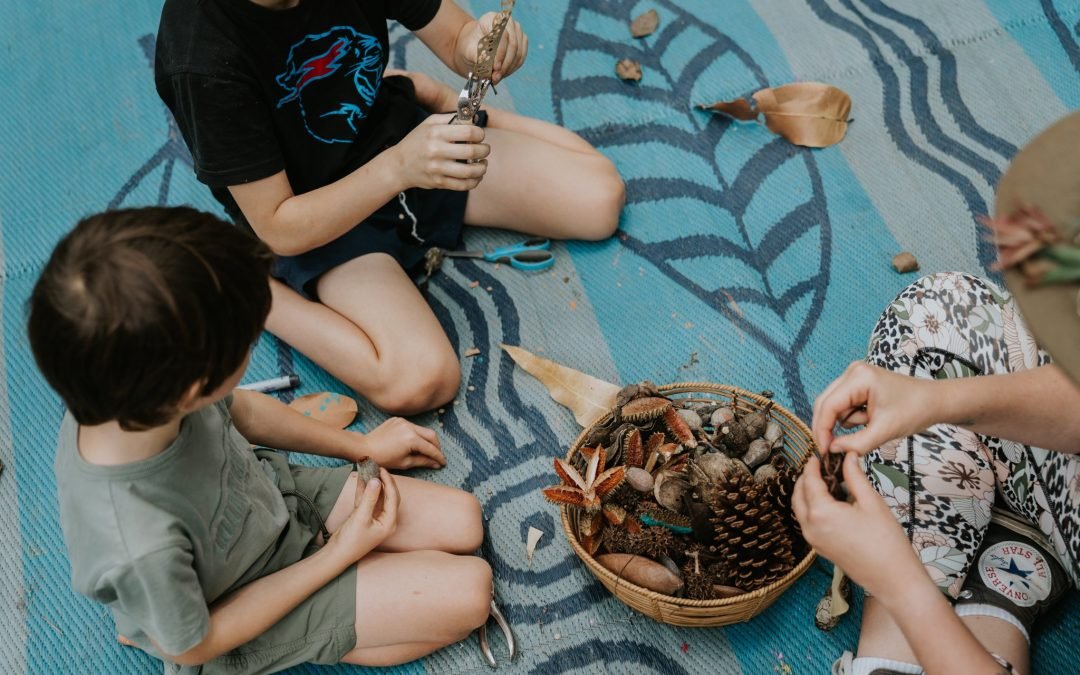In today’s fast-paced, technology-driven world, fostering creativity, resilience, and a deep connection with nature in children is more important than ever. Forest schools, with their emphasis on outdoor learning and experiential education, provide the perfect setting for such development. Central to this educational approach is loose parts play—a concept that is transforming how children interact with their environment. But what exactly is loose parts play, and why is it so crucial in forest school settings? Let’s delve into the significance of this dynamic form of play and explore its myriad benefits.
What is Loose Parts Play?
Loose parts play refers to the use of versatile, open-ended materials that children can manipulate, move, construct, and transform in their play. These materials can range from natural elements like sticks, stones, leaves, and pinecones to man-made items such as ropes, fabric scraps, and recycled containers. Unlike fixed toys, loose parts invite children to use their imagination, creativity, and problem-solving skills to create their own games and structures.
The Essence of Forest Schools
Forest schools are educational programs that take place primarily outdoors, often in woodland or natural settings. They focus on holistic development, encouraging children to explore, discover, and engage directly with nature. The philosophy behind forest schools emphasizes experiential learning, where children learn through hands-on activities and real-world experiences rather than traditional classroom instruction.
Why Loose Parts Play is Essential in Forest Schools
Fostering Creativity and Imagination
Loose parts provide an endless array of possibilities for creative expression. In the rich, varied environment of a forest school, children can use natural materials like twigs and leaves to build shelters, create art, or invent games. This freedom to explore and create without predetermined outcomes nurtures imaginative thinking and innovative problem-solving.
Enhancing Problem-Solving Skills
When children engage with loose parts, they encounter challenges that require them to think critically and devise solutions. Whether it’s figuring out how to balance a stack of stones or designing a makeshift bridge from sticks, these activities promote cognitive development and resilience.
Deepening Connection with Nature
Loose parts play naturally incorporates elements from the environment, helping children develop a stronger bond with nature. Handling natural materials fosters an appreciation for the environment, encourages environmental stewardship, and instills a sense of responsibility towards preserving natural habitats.
Promoting Physical Development
Manipulating loose parts involves various physical activities such as lifting, balancing, and assembling. These movements enhance fine and gross motor skills, coordination, and overall physical health. Forest schools, with their expansive outdoor spaces, provide the perfect arena for such dynamic play.
Encouraging Social Interaction and Collaboration
Loose parts play often involves group activities where children must communicate, negotiate, and collaborate to achieve common goals. Building a collective structure or orchestrating a group game enhances social skills, teamwork, and empathy.
Supporting Emotional Well-being
Engaging in open-ended play allows children to express themselves freely, manage emotions, and develop confidence. The natural setting of forest schools, combined with the flexibility of loose parts, creates a calming environment that supports emotional regulation and mental health.
Stimulating Cognitive Development
Interacting with loose parts stimulates various cognitive processes, including categorization, sequencing, and spatial awareness. Children learn to classify materials, understand cause and effect, and grasp basic scientific principles through play-based exploration.
Practical Applications of Loose Parts in Forest Schools
Nature Art Projects: Using leaves, sticks, and stones to create temporary art installations.
Building Structures: Constructing shelters, forts, or towers with natural materials.
Sensory Play Stations: Creating areas where children can touch, smell, and manipulate different textures.
Storytelling Props: Using loose parts as characters or settings in imaginative storytelling.
Obstacle Courses: Designing and navigating courses that incorporate various natural elements.
Conclusion
Loose parts play is not just a passing trend but a fundamental component of effective forest school education. It embodies the principles of creativity, resilience, and environmental stewardship that are essential for the holistic development of children. By integrating loose parts into forest school curricula, educators provide children with invaluable opportunities to explore, create, and grow in harmony with nature.
Embracing loose parts play in forest schools not only enriches the learning experience but also equips children with the skills and mindset needed to navigate an ever-changing world. As we strive to cultivate the next generation of thinkers, creators, and caretakers, the simple yet profound practice of loose parts play stands out as a cornerstone of meaningful education.

